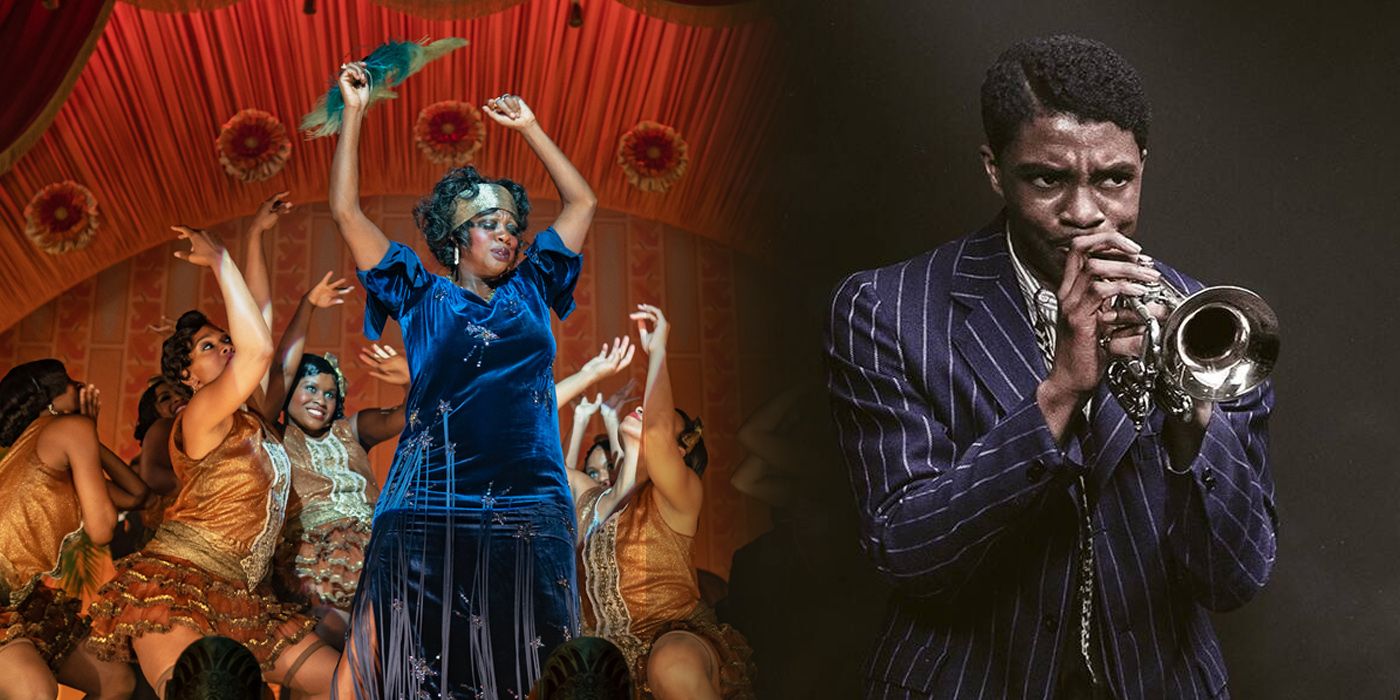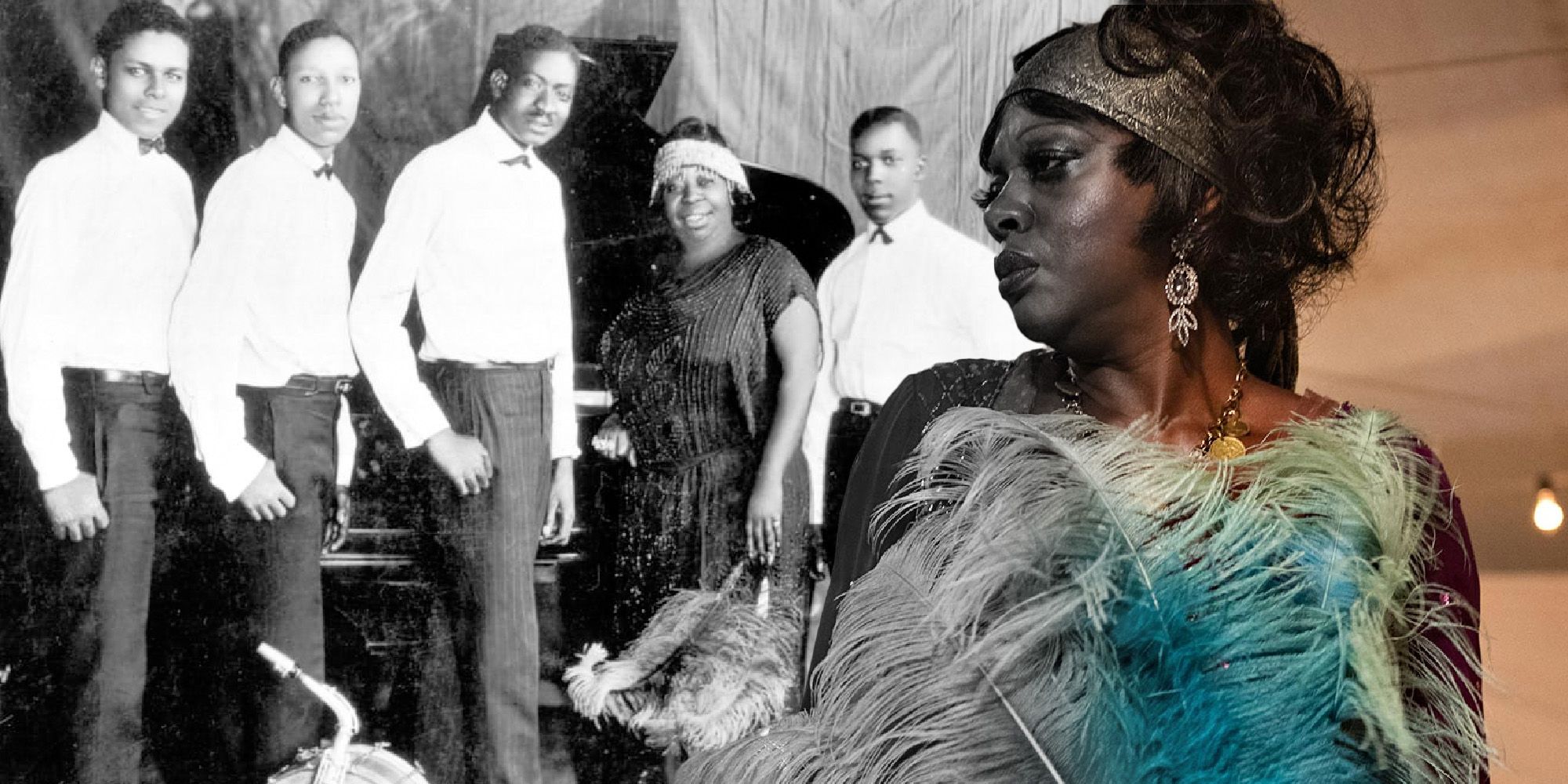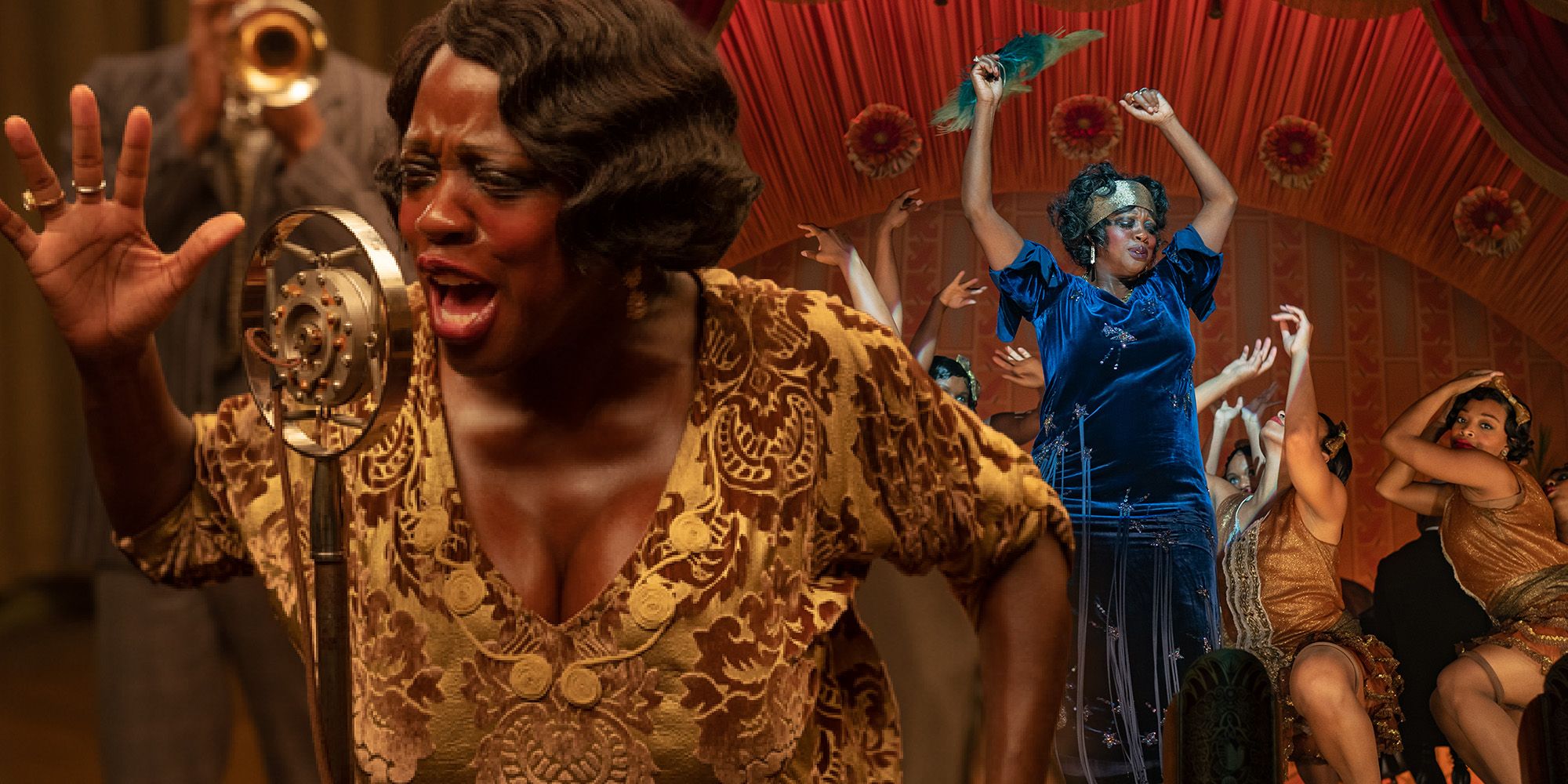The score in Ma Rainey's Black Bottom blurs the line between jazz and blues, which threatens to undermine a key element of Levee's character arc. Written by the great Branford Marsalis, an award-winning jazz artist in his own right, the Ma Rainey's Black Bottom soundtrack is highly listenable, and reflects the composer's deep appreciation for the genre. However, with some of the film's music adopting a more contemporary interpretation of genre, the clashing of Ma and Levee's world views could get ever-so-slightly muddled — especially for audiences unfamiliar with the subject.
Throughout the film, Ma Rainey, the legendary Mother of Blues, comes into conflict with the ambitious trumpeter, Levee, who longs to bring new flair and excitement to the band. This narrative conflict is perhaps best encapsulated by the debate regarding which version of the song "Black Bottom" will be recorded: Levee's new and jazzier update (preferred by Ma's manager Irvin) or the song's original bluesier, and more old-time an vaudeville-inspired, arrangement. Bandleader Cutler's assessment of "It ain't what you say or Mr. Irvin say, it's what Ma say that count" ends up being accurate, and the division between the diva and the trumpet player eventually contributes to the latter's firing and tragic fall.
Audiences recognize the future of jazz in Levee's innovative playing, and part of the tragedy of Ma Rainey's Black Bottom is how various social factors prevent Levee from achieving his musical ambitions. Yet, since some of the film's musical arrangements skew suspiciously toward more contemporary jazz stylings, this development can undercut Levee's arc: rather than seeming like an innovator of the industry, Levee risks coming across as purely arrogant and unappreciative of the opportunity Ma has given him.
The True History of Blues and Jazz In Ma Rainey's Black Bottom
Jazz, which saw a rise in the popularity thanks to the Harlem Renaissance of the 1920s, has roots in both blues and ragtime traditions, making the genre's definition a rather complicated one. In fact, signatures of blues and jazz music often overlap, allowing for some songs to be characterized as both. However, generally speaking, jazz music places a stronger emphasis on its brass instrumentation while more traditional blues makes a stronger utilization of the piano and bass. More heavily by Latin influences, jazz tends to use a more complicated chordal structure than more predictable blues chord progressions. As Levee alludes to in the film, jazz tends to involve stronger dance rhythms, often accompanied by joyful lyrics, whereas blues tends to be less rhythmically precise, using lyrics which emphasize themes of woe and hardship. Finally, the flashier and more complicated jazz generally allows for and encourages showy improvisation far more than the more frequently than traditional blues.
How Ma Rainey's Black Bottom Blurs Jazz and Blues
Near the end of the song "Deep Moaning Blues," Levee steps into the spotlight to take an unexpected and flashy trumpet solo, one which is reminiscent of his beloved jazz. However, Viola Davis' Ma Rainey, clearly trying to regain the crowd's attention, interestingly does some jazz-like improvisation, herself, playing with the melody to belt out the rest of the tune. It's a big show-stopping moment, but the jazzier rendition sounds far different from the original recording, which is far more mellow in tone and adheres more strictly to the song's melody. Suffice it to say, the musical choice is a bit out of character coming from Davis' Ma, who at many times during the film so adamantly embraces the old ways of the blues.
Changes are also made to Davis' version of "Black Bottom," albeit to a far more subtle extent. Whereas Ma Rainey's original recording of the song, the Mother of Blues sings behind the beat, effectively displaying a more "drawl-like" quality. By contrast, Davis is a bit stricter with the beat throughout the tune, which, though different, translates better to modern listeners of contemporary and popular music. Overall, it is likely the musical choices made by Davis and the film's creators were intentional, capturing the spirit of the style without using features of blues which may be slightly unfamiliar and jarring to present-day viewers — or feel closer to old time or "jug band" music, which today is more closely affiliated with the folk genre.
Ultimately, Ma Rainey's Black Bottom's score incorporates elements of jazz in the service of making for more exciting and familiar musical moments, despite straying slightly the original blues recordings. Furthermore, the choice to arrange more livelier tunes for Ma and the band ends up paying off with the inclusion of the film's coda, juxtaposing their joyful and moving performances with the all-white band's rather bland, mechanical one. While the music may walk the fine line that exists between blues and jazz, it is hard to argue that the end product doesn't make for an effective and appropriately moving soundtrack.



